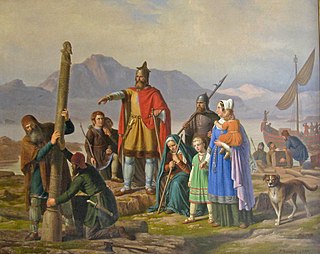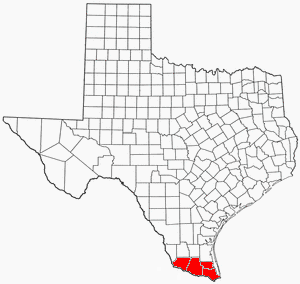
Zavala County is a county located in the U.S. state of Texas. As of the 2010 census, the population was 11,677. Its county seat is Crystal City. The county was created in 1858 and later organized in 1884. Zavala is named for Lorenzo de Zavala, Mexican politician, signer of the Texas Declaration of Independence, and first vice president of the Republic of Texas.

Hidalgo County is a county in the U.S. state of Texas. The county seat is Edinburg and the largest city is McAllen. The county is named for Miguel Hidalgo y Costilla, the priest who raised the call for Mexico's independence from Spain. It is located in the Rio Grande Valley of South Texas and is one of the fastest-growing counties in the United States. As of the 2017 census, the population was 860,661, making it the eighth-most populous county in Texas.
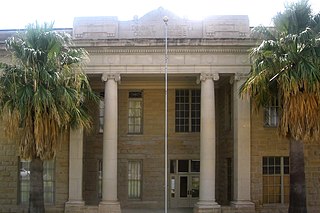
Dimmit County is a county located in the U.S. state of Texas. As of the 2010 census, its population was 9,996. The county seat is Carrizo Springs. The county was founded in 1858 and later organized in 1880. It is named for Philip Dimmitt, a major figure in the Texas Revolution. The spelling of the county name and the spelling of the individual's name differ because of a spelling error in the bill creating the county name.

Mission is a city in Hidalgo County, Texas, United States. The population was 77,058 at the 2010 census and an estimated 83,563 in 2016. Mission is part of the McAllen–Edinburg–Mission and Reynosa–McAllen metropolitan areas.

Palmhurst is a city in Hidalgo County, Texas. The population was 2,607 at the 2010 United States Census. It is part of the McAllen–Edinburg–Mission and Reynosa–McAllen metropolitan areas.

Weslaco is a city in Hidalgo County, Texas, United States. As of the 2010 census the population was 35,670, and in 2016 the estimated population was 40,033. It is located at the southern tip of Texas in the Rio Grande Valley near the Mexican border, across the Rio Grande from the city of Nuevo Progreso, Rio Bravo, Tamaulipas.
The International Boundary and Water Commission is an international body created by the United States and Mexico in 1889 to apply the rules for determining the location of their international boundary when meandering rivers transferred tracts of land from one bank to the other, as established under the Convention of November 12, 1884.
Río Rico is a town located along the Rio Grande river in the Mexican state of Tamaulipas. It is notable for its partial occupation of the Horcón Tract, a piece of land ceded by the United States to Mexico in 1977 under the terms of the Boundary Treaty of 1970.
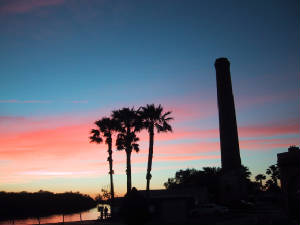
The First Lift Station is a pump station in Mission, Texas, that once provided water for irrigating the crops of the early Rio Grande Valley. In 1907 John J. Conway and James W. Hoit began the Mission Canal Co. Irrigation system, which was instrumental in the early agricultural growth of the area. Here, they built the first pump station. The pump was powered by steam produced by wood-fired boilers. The chimney, which still stands at the site, was made out of handmade brick from Madero. It is 106 feet tall and 6 feet in diameter. The top of the chimney has a double row of bricks that form a partial design, but the top was never completed. The chimney was dedicated as a Texas Historic Landmark by the Texas Historical Commission in 1985.

James John (J.J.) Hagerman was an American industrialist who owned mines, railroads and corporate farms in the American West in the late 19th and early 20th centuries. He was one of the most influential men in territorial New Mexico.

The Riverside Canal is an irrigation canal in El Paso County beginning southeast of El Paso, Texas. The canal acquires water from the Riverside Diversion Dam on the Rio Grande 15 miles (24 km) southeast of El Paso. The canal is managed by the US Bureau of Reclamation. The canal extends for 17.2 miles (27.7 km) with a capacity of 900 cubic feet per second. Water from the canal irrigates about 39,000 acres (160 km²). The canal and diversion dam is the southernmost system on an irrigation project extending along the Rio Grande in New Mexico and Texas. The canal supplies a canal network extending throughout the Upper Rio Grande Valley.

There are many irrigation canals in Texas. The majority of large canal networks are in the Rio Grande Valley and the Gulf Coast, though smaller systems are located throughout the state. Canals provide water to dry climates to irrigate crops.
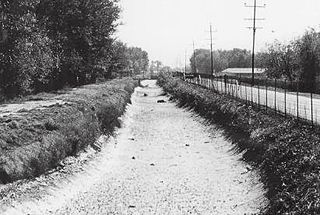
The Franklin Canal is an irrigation canal in the Upper Rio Grande Valley near El Paso, Texas. The canal acquires water from the Rio Grande via the American Canal. The canal is 28.4 miles (45.7 km) long with a capacity of 325 cubic feet per second.

The Winter Garden Region is an agricultural area in South Texas (USA) located north of Laredo and southwest of San Antonio. The region is centered on four "core" counties - Dimmit, Frio, La Salle, and Zavala, but also includes parts of Atascosa, Maverick, and McMullen counties.

The World Birding Center is the official title given to a combined nine parks and nature preserves in the Rio Grande Valley region of Texas managed by a partnership of the Texas Parks and Wildlife Department, the U.S. Fish and Wildlife Service, and the local communities in which the parks reside. The stated mission of the World Birding Center is to “protect native habitat while increasing the understanding and appreciation of the birds and wildlife,” with an additional emphasis on promoting local economic development through ecotourism.
The University of California Citrus Experiment Station is the founding unit of the University of California, Riverside campus in Riverside, California, United States. The station contributed greatly to the cultivation of the orange and the overall agriculture industry in California. Established February 14, 1907, the station celebrated its 100th anniversary in 2007.

The Rio Grande Project is a United States Bureau of Reclamation irrigation, hydroelectricity, flood control, and interbasin water transfer project serving the upper Rio Grande basin in the southwestern United States. The project irrigates 193,000 acres (780 km2) along the river in the states of New Mexico and Texas. Approximately 60 percent of this land is in New Mexico. Some water is also allotted to Mexico to irrigate some 25,000 acres (100 km2) on the south side of the river. The project was authorized in 1905, but its final features were not implemented until the early 1950s.

The Middle Rio Grande Conservancy District (MRGCD) was formed in 1925 to manage the irrigation systems and control floods in the Albuquerque Basin. It is responsible for the stretch of river from the Cochiti Dam in Sandoval County in the north, through Bernalillo County, Valencia County and Socorro County to the Elephant Butte Reservoir in the south. It manages the Angostura, Isleta and San Acacia diversion dams, which feed an extensive network of irrigation canals and ditches.

The Middle Rio Grande Project manages water in the Albuquerque Basin of New Mexico, United States. It includes major upgrades and extensions to the irrigation facilities built by the Middle Rio Grande Conservancy District and modifications to the channel of the Rio Grande to control sedimentation and flooding. The bulk of the work was done by the United States Bureau of Reclamation and the United States Army Corps of Engineers in the 1950s, but construction continued into the 1970s and maintenance is ongoing. The project is complementary to the San Juan-Chama Project, which transfers water from the San Juan River in the Colorado River Basin to the Rio Grande. Although distribution of water from the two projects is handled through separate allotments and contracts, there is some sharing of facilities including the river itself. The ecological impact on the river and the riparian zone was the subject of extended litigation after a group of environmentalists filed Rio Grande Silvery Minnow v. Bureau of Reclamation in 1999.



